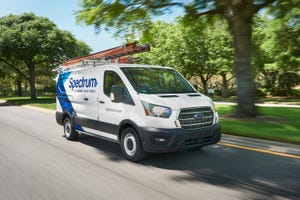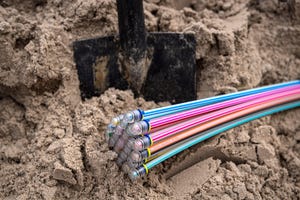Sprint Reveals 3 More 5G Cities, Promises 'Cool' 5G Phone & Small Cell
Sprint promises new design thinking for its first 5G handset.

AUSTIN, Texas -- 5G North America -- On Tuesday Sprint named three new 5G cities. It’s also promising that a cool phone will be available for its planned launch in the first half of 2019 and it’s working on a 5G version of its popular "Magic Box" small cell.
Sprint's chief strategy officer Kevin Crull -- sporting jazzy yellow sneakers -- announced the three new cities at his keynote at the 5G North America conference, which is running alongside Light Reading's Big Communications Event (BCE) here in Austin. They are "the greatest city in the world" New York City (of course!), Sprint's hometown of Kansas City and Phoenix.
Crull noted that Phoenix is "great" for signal propagation, because it's in the desert. The Kansas City launch plans had already leaked but the other two are new, this means Sprint plans to have at least nine cities with "ubiquitous" coverage for its 2019 launch on its 2.5GHz spectrum. (See 5G in the USA: A Post-M&A Update.)
All of this is subject to change, however, if or when the planned $26.5 billion merger between T-Mobile US Inc. goes ahead in the half of 2019. During his keynote, Crull said that Sprint can build a nationwide 5G mobile network on its own, but needs the "new" T-Mobile to build a "globally leading" 5G network. (See T-Mobile to Buy Sprint for $26.5B to Create US 5G Powerhouse.)
{Image 1}
The merger does have some deep technical implications for 5G-network building. On its own, Sprint will need to support 2.5GHz, 1.9GHz and 800MHz for 3G, 4G and 5G. It won't need to layer in support for millimeter wave (28GHz/39GHz) or T-Mobile's 600MHz low-band either.
Sprint isn't saying exactly what speeds it expects from its initial network. Crull did say he speeds of around ten times the 4G average today. Director of corporate communications at Sprint, Adrienne Norton, chipped in to say that average speeds are 25-Mbit/s today. That number is steadily rising though, Crull noted.
This means we could anticipate averages on a range of 250-Mbit/s to 300-Mbit/s from a Sprint-only network. The "newco" is promising averages of around 450-Mbit/s when it starts deploying.
The one of the benefits of 5G -- for the carriers -- is that the new technology might help improve handset refresh rates, Crull told Light Reading.
He laments the way that smartphones today have become somewhat indistinguishable from each other "Phones used to be status symbols," he said. He is promising something different from Sprint with its first 5G phone, but won't say how, yet
Basically, he hopes that the design will get a reaction along the lines of : "Who's that cool dude?" if you walk down the street with it. [Ed note: Nerds!!!]
Crull says that Sprint will also launch a new "Magic Box" small cell for 5G. The Magic Box is used to improve 2.5GHz coverage indoors and doesn't need to ride off a DSL cable, backhauling wirelessly off a 2.5GHz or 1.9GHz signal from a nearby Sprint basestation. (See Sprint's Next Trick? They Call It a 'Magic Box'.)
— Dan Jones, Mobile Editor, Light Reading
About the Author(s)
You May Also Like




_International_Software_Products.jpeg?width=300&auto=webp&quality=80&disable=upscale)







